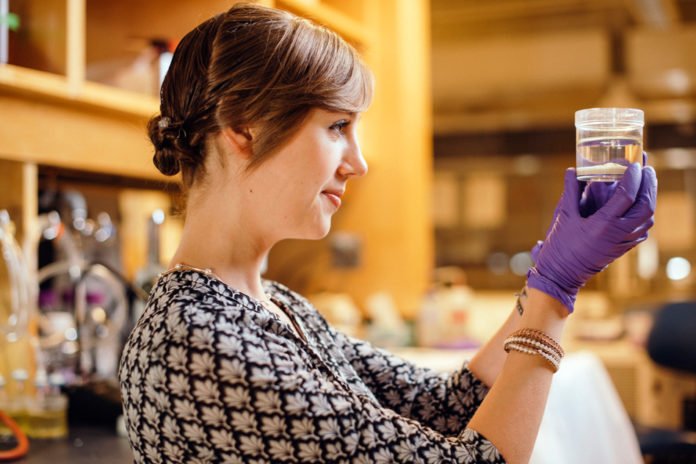Kelsey Moore, a fourth-year graduate student at MIT, studying about geobiology, the study of how the physical Earth and biosphere interact. She wanted to learn about Earth history. But later on, she took invertebrate paleontology class and realized how much we can learn about life and how life has evolved.
Now, Morre is conducting her own research in the geobiology lab of Associate Professor Tanja Bosak in MIT’s Department of Earth, Atmospheric, and Planetary Sciences.
She said, “I have a natural curiosity about how we got here, and how the Earth became what it is. There’s so much unknown about the early biosphere on Earth when you go back 2 billion, 3 billion, 4 billion years.”
Most studies suggest early life on the earth by focusing on ancient microbes from the Proterozoic, the period of Earth’s history that spans 2.5 billion to 542 million years ago — between the time when oxygen began to appear in the atmosphere up until the advent and proliferation of complex life.
Along with her colleagues named Bosak and Greg Fournier, the Cecil and Ida Green Assistant Professor of Geobiology, she tracked cyanobacterial evolution. The question of when cyanobacteria picked up the capacity to perform oxygenic photosynthesis, which produces oxygen and is what number of plants on Earth today get their vitality, is still under discussion.
To track cyanobacterial development, MIT analysts draw from hereditary qualities and micropaleontology. Moore chips away at sub-atomic clock models, which track genetic transformations after some time to gauge the developmental difference in living beings.
Scientists then filter through different cyanobacteria under a microscope to discover present day analogs to old cyanobacterial fossils. The procedure can be tedious. After identifying a particular type of cyanobacteria, a process which can sometimes take months. After the strain is enriched and cultured, Moore extracts DNA from the cyanobacteria.
Moore said, “We sequence modern organisms to get their genomes, reconstruct them, and build phylogenetic trees.”
After that by bounding information together from ancient fossils and modern analogs using molecular clocks, scientists would like to construct a chronogram — a sort of phylogenetic tree with a period part that in the end follows back to when cyanobacteria developed the capacity to part water and deliver oxygen.
Moore said, “We’re trying to analyze fossils on Earth to get an idea for how we’re going to look at whatever samples get brought back from Mars and then to also understand how we can learn from other planets and potentially other life.”
To study ancient organisms and find fossils, Moore has traveled across the world, to Shark Bay in Australia, Death Valley in the United States, and Bermuda.
Moore said, “In order to understand the rocks, you really have to get your nose on the rocks. Go and look at them, and be there. You have to go and stand in the tidal pools and see what’s happening — watch the air bubbles from the cyanobacteria and see them make oxygen. Those kinds of things are really important in order to understand and fully wrap your brain around how important those interactions are.”
“And in the field researchers have to roll with the punches. You don’t have a nice, beautiful, pristine lab set up with all the tools and equipment that you need. You just can’t account for everything. You have to do what you can with the tools that you have.”
As a Graduate Resident Tutor, Moore helps to create supporting living environments for the undergraduate residents of Simmons Hall.
Each week, she hosts a study break in her apartment in Simmons for her cohort of students — complete with freshly baked treats.
